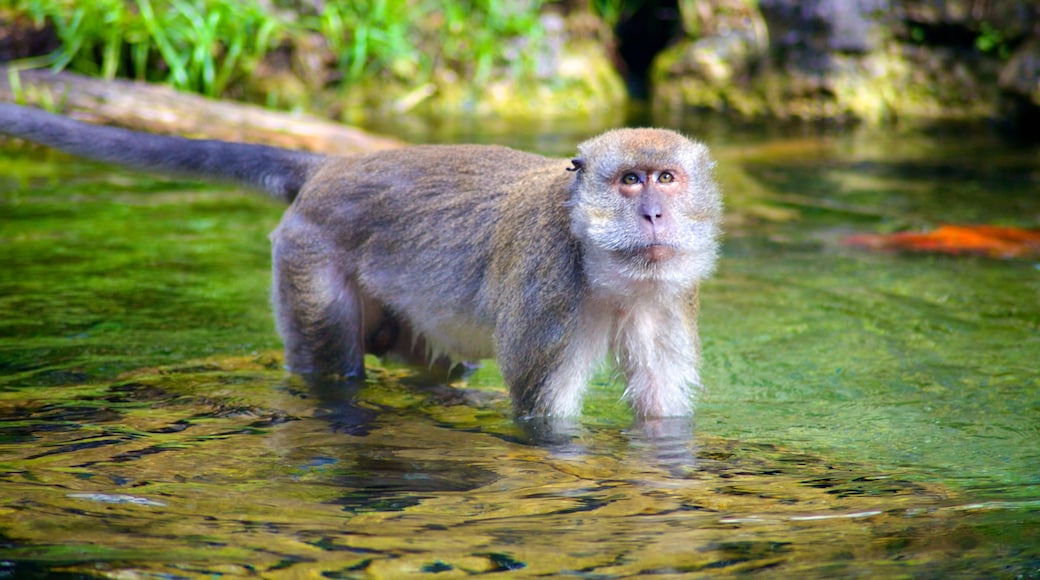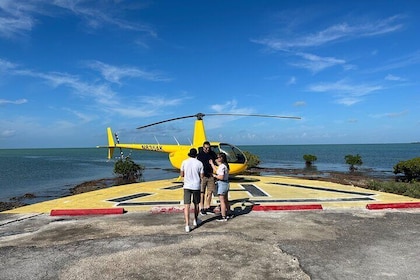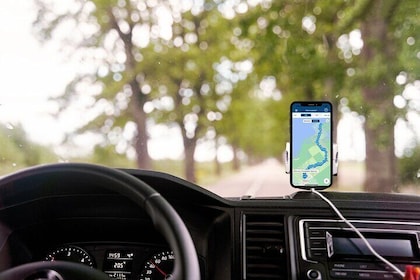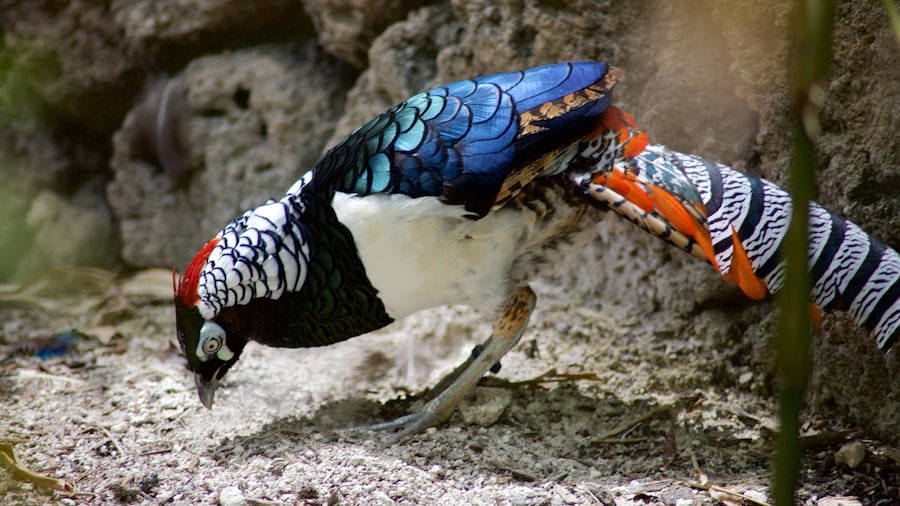Monkey Jungle is “where humans get caged and monkeys run wild”, according to its slogan. The 30-acre (12-hectare) reserve houses 400 monkeys, many of them in a specially created rainforest. Unlike a typical zoo, some of the species roam free while visitors, from the species homo sapiens, observe from behind screened trails. You’ll wonder who’s watching who!
Monkey Jungle began almost by accident in 1933 when a self-taught naturalist, Joseph DuMond, released six macaque monkeys from Java into dense bushland in Florida to observe their survival habits. The experiment was a success and the reserve became one of the few protected habitats for primates in the U.S. Today, the descendants of the Java monkeys number over a hundred and DuMond’s own descendants continue to provide them with a safe environment. About 30 other primate species now keep the troop of crab-eating macaques company. The South American species feel well at home in their own Amazonian rainforest habitat.
Watch your head, because some Monkey Jungle residents will quickly lower down a bowl when you walk past. They want you to give them peanuts and fruit, which you can buy at the entrance. The other monkeys are free to forage for food, but there are also special feeding times, when park rangers give the monkeys fruit and educate visitors. Learn about endangered species such as the tiny golden lion tamarin, big hairy orangutans and king-sized gorillas. Watch the orangutans perform tricks during the Hangin’ with the Orangs show. A real crowd-pleaser is the Wild Monkey Swimming Pool where the intelligent macaques dive in to catch seafood.
Monkey Jungle is located 27 miles (44 kilometer) south of downtown Miami, at Cutler Bay in South Dade. Parking is free. Admission is not cheap, but some of this fee goes towards sheltering protected species. Children under the age of 3 have free access. The park is open daily and guided tours are available throughout the day. Be sure to book in advance, as the tours are popular.
































